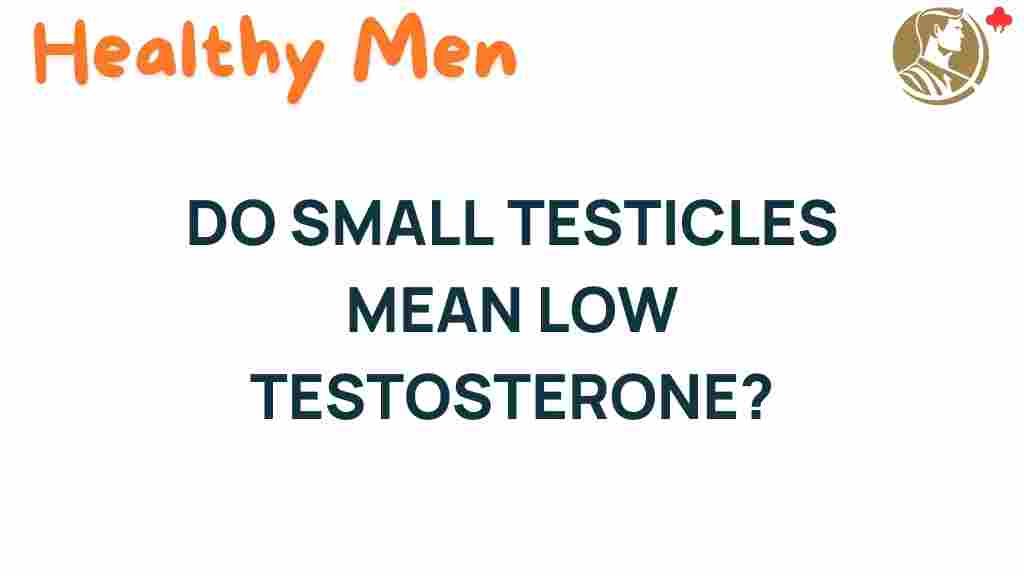Do Small Testicles Indicate Low Testosterone Levels?
Testosterone is a vital hormone that plays a significant role in male health, influencing everything from muscle mass and fat distribution to sexual health and fertility. However, there are many myths surrounding testosterone levels and their implications on male physiology, particularly regarding the size of testicles. In this article, we will explore whether small testicles indicate low testosterone levels, unravel the myths, and delve into the latest research in endocrinology.
Understanding Testosterone and Its Role in Male Health
Testosterone is primarily produced in the testicles and is crucial for:
- Development of male sexual characteristics
- Maintaining muscle mass and strength
- Bone density
- Libido and sexual function
- Sperm production and overall fertility
Normal testosterone levels are essential for optimal male health. However, testosterone levels can fluctuate due to various factors, including age, lifestyle, and underlying health conditions.
Do Small Testicles Mean Low Testosterone Levels?
One common belief is that small testicles are indicative of low testosterone levels. This notion stems from the understanding that testicles are responsible for testosterone production. However, the relationship between testicle size and testosterone levels is more complex than it appears.
Research Insights
Several studies have sought to determine the correlation between testicle size and testosterone production. Here are some key findings:
- Research has shown that while larger testicles often produce more testosterone, this is not a definitive rule. Some men with smaller testicles can still produce normal or even elevated testosterone levels.
- A study published in the Journal of Clinical Endocrinology & Metabolism found no direct correlation between testicle size and testosterone levels across a diverse population.
- Other factors, such as genetics and overall health, can significantly impact testosterone production and should not be overlooked.
Myths About Testicle Size and Testosterone
The myths surrounding small testicles and testosterone levels can lead to unnecessary concern and misconceptions about male health. Here are some common myths:
- Myth 1: All men with small testicles have low testosterone.
- Myth 2: Testicle size is the only indicator of fertility.
- Myth 3: Testosterone replacement therapy is only for men with small testicles.
- Myth 4: Men with larger testicles are always healthier.
Understanding these myths is crucial for maintaining a healthy perspective on male health and hormone levels.
Factors Influencing Testosterone Levels
Several factors can influence testosterone levels aside from testicle size:
- Age: Testosterone levels generally decline with age, starting around the age of 30.
- Health Status: Conditions such as obesity, diabetes, and hormonal disorders can affect testosterone production.
- Lifestyle Choices: Diet, exercise, sleep, and stress levels play a significant role in hormone balance.
Assessing Testosterone Levels
If you suspect that you may have low testosterone, consider the following steps to assess your hormone levels:
- Consult a Healthcare Professional: Schedule an appointment with an endocrinologist or urologist to discuss your concerns.
- Undergo Testing: Your doctor will likely recommend a blood test to measure your testosterone levels. It is important to have this test done in the morning when testosterone levels are typically highest.
- Evaluate Symptoms: Discuss any symptoms you may be experiencing, such as fatigue, decreased libido, or mood changes. This information can help your doctor determine the best course of action.
Troubleshooting Low Testosterone Symptoms
If you are diagnosed with low testosterone, several treatment options may be available:
- Lifestyle Modifications: Improving diet, increasing physical activity, and managing stress can help boost testosterone levels naturally.
- Testosterone Replacement Therapy (TRT): This may involve injections, patches, or gels to restore testosterone levels. Discuss the risks and benefits with your healthcare provider.
- Addressing Underlying Conditions: Treating conditions like obesity or metabolic syndrome can also improve testosterone levels.
Conclusion
In conclusion, while there is a perception that small testicles indicate low testosterone levels, the reality is much more nuanced. Testicle size does not solely determine testosterone production, and various factors contribute to hormone levels and overall male health. It is essential to differentiate between myths and facts, relying on research and professional medical advice.
If you have concerns about your testosterone levels or testicle size, do not hesitate to reach out to a healthcare professional. Understanding your body and hormone levels is critical for maintaining sexual health and fertility, and addressing any issues early can lead to better health outcomes in the long run.
For more information on testosterone and male health, explore our other articles on male health topics and stay informed about your well-being.
This article is in the category Conditions and created by healthymen Team
